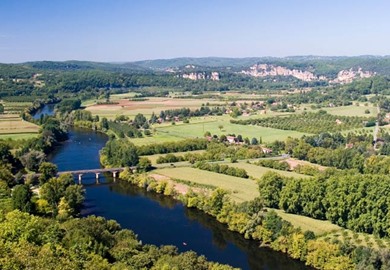1 result matching: Trips to Sarlat

 (229 reviews)
(229 reviews)Located near the centre of the Dordogne department of central south-western France, Sarlat-la-Canéda (usually referred to simply as 'Sarlat') is the capital city of the French region known as the Perigord Noir. Growing up around a Benedictine monastery in the ninth century, Sarlat's central 'old town' comprises a wealth of superbly-restored and beautiful medieval buildings through which narrow paved streets and alleyways wind. Modern buildings have largely not been allowed to intervene here, and thus the 'old town', officially a preservation area, retains an almost palpable air of history.

 (229 reviews)
(229 reviews)
Sarlat's abundance of historic architecture - the city boasts at least 250 listed buildings, more per square metre than any other European city - its natural beauty and its arts and cultural have created a destination that is immensely popular with visitors. Besides the obvious appeal of its medieval heritage, Sarlat also offers many delightful independent shops to explore and inviting cafes from which to sit back with a coffee and watch the world go by. Wednesday and Saturday are Sarlat's market days and these provides the perfect opportunity to rub shoulders with the locals among colourful stalls which sell a variety of outstanding fresh local produce including cheeses, sausages, fruit and vegetables and the foie gras d'oies for which the region is famous.
Sarlat's historic cathedral can be found in the heart of the old
town. The entrance is the oldest part of the cathedral; a
Romanesque bell-tower which dates back to the twelfth century. The
rearmost part of the building is the original cathedral dating from
the fourteenth century, whilst the central section is of
seventeenth-century origin.
On one side of Sarlat's Place du Marche aux Oies (Goose Market Square), the Manoir de Gisson is a meticulously-restored and preserved thirteenth-century townhouse with traditional mullioned windows and a central, hexagonal tower. The cellars of the house have been turned into a fascinating museum of curios and artefacts collected by seventeenth and eighteenth century explorers and adventurers on their travels around the world.
In the gardens behind Sarlat's cathedral, the elevated Lanterne des Morts is a curious circular building with a conical roof and dates from the twelfth century. Its original purpose was to indicate the position of a cemetery - Lanterne des Morts means 'lantern of the dead' named for the light which shone from the building's roof. Today, Sarlat's Lanterne des Morts provides excellent views over the city.